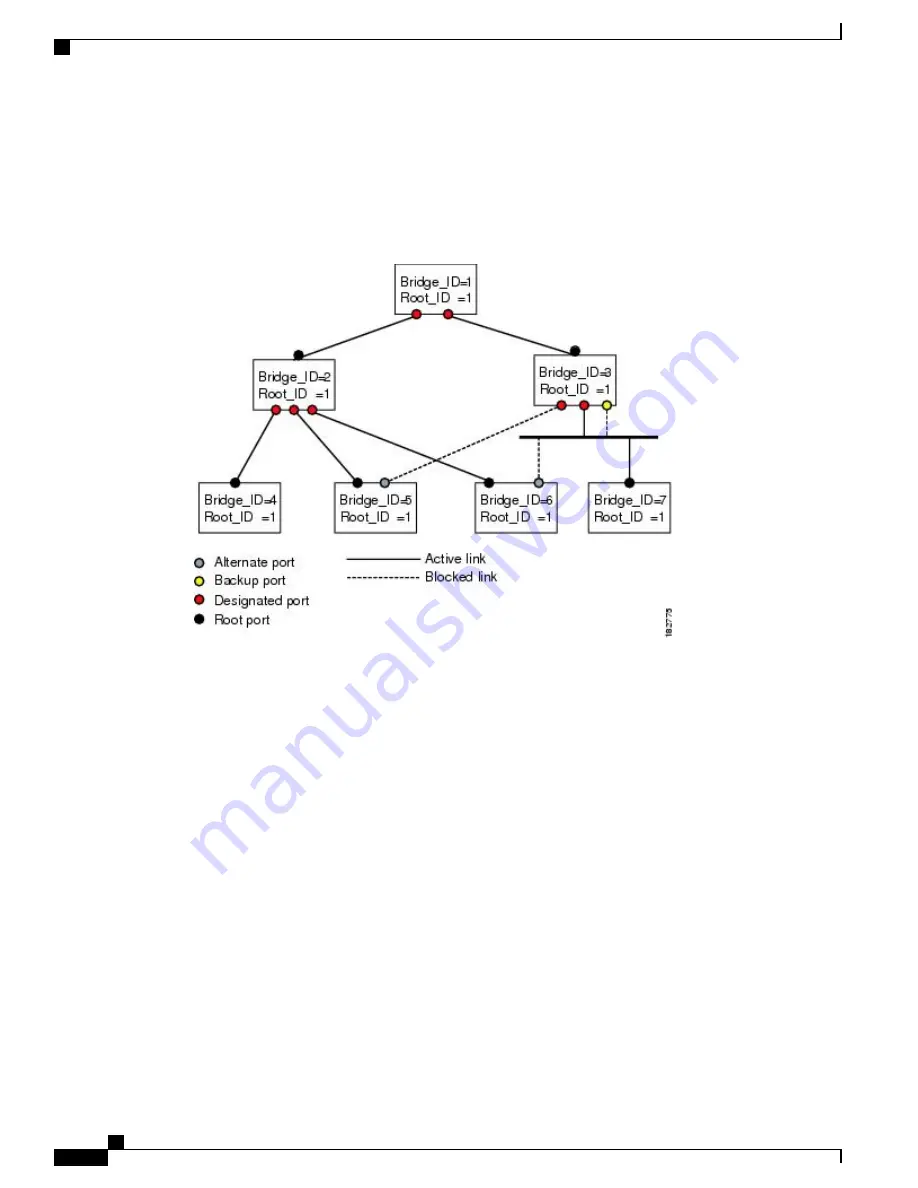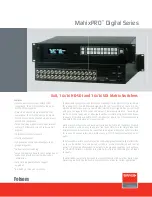
are always in the blocking state. Designated ports start in the blocking state. The port state controls the operation
of the forwarding and learning processes.
A port with the root or a designated port role is included in the active topology. A port with the alternate or
backup port role is excluded from the active topology (see the following figure).
Figure 10: Sample Topology Demonstrating Port Roles
Port States
Rapid PVST+ Port State Overview
Propagation delays can occur when protocol information passes through a switched LAN. As a result, topology
changes can take place at different times and at different places in a switched network. When a LAN port
transitions directly from nonparticipation in the spanning tree topology to the forwarding state, it can create
temporary data loops. Ports must wait for new topology information to propagate through the switched LAN
before starting to forward frames.
Each LAN port on a software using Rapid PVST+ or MST exists in one of the following four states:
•
Blocking
—
The LAN port does not participate in frame forwarding.
•
Learning
—
The LAN port prepares to participate in frame forwarding.
•
Forwarding
—
The LAN port forwards frames.
•
Disabled
—
The LAN port does not participate in STP and is not forwarding frames.
When you enable Rapid PVST+, every port in the software, VLAN, and network goes through the blocking
state and the transitory states of learning at power up. If properly configured, each LAN port stabilizes to the
forwarding or blocking state.
Cisco Nexus 6000 Series NX-OS Layer 2 Switching Configuration Guide, Release 7.x
52
Configuring Rapid PVST+
Understanding Rapid PVST+
















































